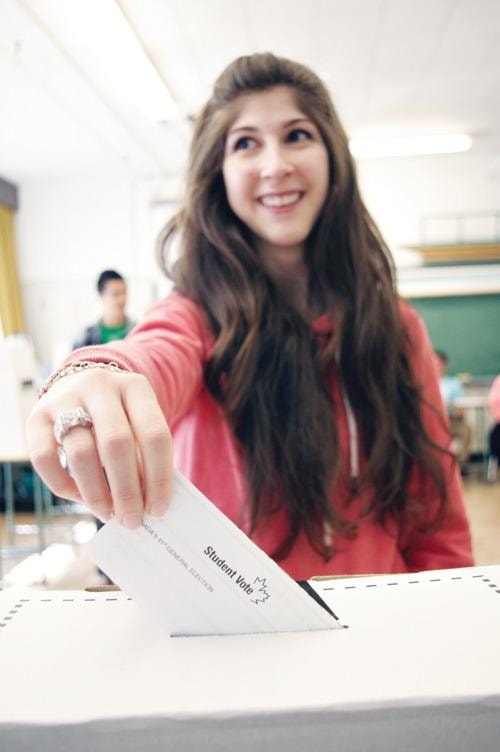Hundreds of Nanaimo students staged their own federal elections this week in advance of Monday's 41st general election.
Fourteen elementary and secondary schools participated in the Student Vote program April 28-29.
Student Vote is a non-profit group that organizes parallel elections coinciding with official election periods for students under the voting age.
The purpose is to give young Canadians a chance to experience the democratic process first-hand and practice the habits of informed and engaged citizenship.
"Everything is set up like a real polling station," said Woodlands Secondary School teacher Lorna Riddell, whose entire school participated Thursday. "Mainly it's to get our students involved in the process so when they're of age to vote, hopefully they'll be more active, engaged citizens."
Students learn about Canada's government and electoral system in Grade 11 social studies, said Riddell. Those classes made posters with information on candidates in the Nanaimo-Cowichan riding and put them up in the library.
For election day, the schools receive maps, voting booths, ballot boxes and ballots printed with names of the candidates in each school's riding.
Samaa Soufan, a Grade 12 student and polling clerk volunteer for the Woodlands election, turned 18 in January and voted in both the student election and the real election.
While Soufan takes an interest in politics and had several debates with her parents before voting in the advance polls, she said the parallel election is a good exercise for students who aren't as engaged, because it gets them used to the process.
"If you're teaching the Grades 8, 9 and 10 students to vote, they're going to think it's a normal thing," she said. "Not a lot of students know about politics."
"I think a lot of kids don't really think about it until they see something like this happen," added Marnie Hustins, a Grade 11 polling clerk.
Political discussions are infrequent for Grade 12 student John Le and his friends, because they can't vote yet.
"I think some will use this exercise to start learning about voting," he said. "I'm sure once many of us turn 18 or 19, we will start considering this a lot more."
A side benefit of the parallel election is that it might generate more interest in the adult community when students go home and tell their families about the experience, said Riddell.
She hopes that the political parties pay attention to the results of the student elections because it's an indication of who youth will vote for when they come of age.
Donna Gannon, a teacher at Pleasant Valley Elementary School, devoted eight lessons to prepare her Grade 6 class for the vote on Friday (April 29).
At first students were reluctant and wanted to know why they had to learn about Canada's political system, but as she progressed through the lessons, the discussions started getting so long she had to stop them so they could get other work done.
"I think they see the importance of going out to vote," she said. "It makes them more aware and more accountable."
Results of the student elections will be made public after the federal election is over.
